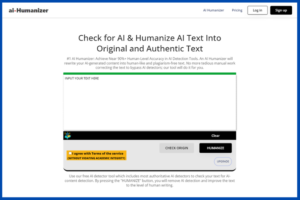Introduction
Software companies create, build, and test software with a strong quality focus using the Software Development Life Cycle (SDLC), a scientific and disciplined procedure. All software development operations are guided by a comprehensive framework called the Software Development Life Cycle (SDLC). Every stage of the SDLC process—from careful planning and early conception to coding, rigorous testing, deployment, and continuous maintenance—is meticulously incorporated into the overall structure.

This methodical technique guarantees not just the effectiveness of the software development process but also the exact match between the software product and end users’ requirements and expectations. The program Development Life Cycle (SDLC) offers a roadmap that improves the overall quality of the program and creates a basis for successful outcomes in the complex development process by breaking it down into well-defined stages.
Full Form of SDLC
SDLC stands for Software Development Life Cycle.
What is Software Development Life Cycle (SDLC)?
The Software Development Life Cycle (SDLC) is a methodical approach to software development, systematically dividing the entire process into well-defined stages to ensure efficiency and excellence. It spans from the initial planning and requirement analysis to coding, rigorous testing, deployment, and continuous maintenance. This comprehensive methodology ensures a structured and professional progression throughout the software development process.
Phases of the Software Development Life Cycle Model
Software development life cycle, or SDLC, is a framework that describes the distinct roles that software engineers and developers must play at different phases. Its goal is to guarantee that the finished product stays within the allocated budget while still satisfying the customer’s expectations. Consequently, each and every software developer needs to have a firm understanding of the SDLC.

The SDLC model consists of six essential phases:
Step 1: Planning and Analyzing Requirements
In this preliminary phase, we collect data, establish project objectives, and comprehend our clients’ needs. This step lays the groundwork for the entire development process.
Step 2: Defining Requirements
In this phase, we document detailed requirements that specify the functionalities and features expected in the software. We collaborate with developers, stakeholders, and clients to ensure a clear understanding of project expectations.
Step 3: Designing the Architecture
The architectural design phase focuses on creating a blueprint for the software system. We define the overall structure, user interface, database design, and other technical specifications.
Step 4: Developing the Product
The actual coding and implementation of the software take place in this phase. Our developers write code based on the requirements and design specifications outlined in the previous stages.
Step 5: Testing and Integration of the Product
This stage involves rigorous testing of the software to identify and fix any defects. We also conduct integration testing to ensure that all components work seamlessly together.
Step 6: Deployment and Maintenance of the Product
In this final stage, we deploy the finished product for end-users. We also initiate ongoing maintenance and support activities to address any issues that may arise and to enhance the software as needed.
Software Development Life Cycle Models
Different approaches to the development process are offered by various SDLC models, including Waterfall, Agile, and Spiral. Each model comes with its own set of principles and methodologies to steer the project through its life cycle.
Certainly! Here are details on different models of the Software Development Life Cycle (SDLC):
1. Waterfall Model:
Description: The Waterfall model follows a step-by-step approach where each stage must be completed before moving on to the next. It includes various stages such as requirements gathering, design, implementation, testing, deployment, and maintenance.
Advantages: It has a clear structure, is basic, and is easy to learn
Disadvantages: Lack of flexibility, and changes are challenging once a phase is complete.
2. Agile Model:
Description: Agile is an iterative and flexible approach that emphasizes collaboration and customer feedback. It divides the project into small increments called iterations, allowing for regular reassessment and adaptation.
Advantages: It offers flexibility, customer involvement, and quick response to changes.
Disadvantages: It requires active customer involvement and may lack a comprehensive overall plan.
3.Iterative Model:
Description: The Iterative model entails iterative rounds of software prototyping, improvement, and refinement. Every iteration improves on the one before it, progressively enhancing the program in response to user input.
Advantages: Include adaptability, ongoing enhancement, and problem discovery at an early stage.
Disadvantages: It could take more time and resources, and it might be more difficult.
4.Spiral Model:
Description: The Spiral model combines elements of both the waterfall and iterative models. It emphasizes risk assessment and management, with each iteration representing a spiral. It involves planning, risk analysis, engineering, testing, and evaluation.
Advantages: It offers effective risk management and accommodates changes during development.
Disadvantages: It can be complex and may require more time and resources.
5. V-Shaped Model:
Description: The V-Shaped model is a sequential approach that incorporates testing into each phase. It follows a V-shape, with each development stage being accompanied by a corresponding testing phase.
Advantages: The V-Shaped model has a clear and simple structure, ensuring that each development phase is matched with a testing phase.
Disadvantages: However, it is less flexible, and making changes becomes challenging once the testing phase has begun.
6. Big Bang Model:
Description: The Big Bang model, on the other hand, is an informal and unstructured approach where there is no specific planning or well-defined phases. Development starts without a clear process, and adjustments are made as necessary.
Advantages: This model offers flexibility and allows for continuous adjustments throughout the development process.
Disadvantages: However, it lacks structure, which can lead to unpredictability and difficulties in tracking progress.
These SDLC models provide different approaches to software development, and the choice depends on the specific requirements, constraints, and team preferences of each project. Each model has its own strengths and weaknesses, making it suitable for different scenarios.
What is the Need for SDLC?
There are multiple reasons why the Software Development Life Cycle (SDLC) is considered essential:
- A Structured Approach: SDLC offers a well-organized and systematic method for software development, guaranteeing that each phase is thoroughly completed before moving forward.
- Ensuring Quality: The testing and validation processes within SDLC contribute to a higher level of quality and reliability in the software.
- Managing Risks: By breaking down the development process into stages, potential risks and issues can be identified and addressed early on, reducing the chances of failure.
- Client Satisfaction: SDLC involves continuous communication with clients and stakeholders, ensuring that the final product meets their expectations.
- Optimizing Resources: SDLC helps optimize resources by avoiding unnecessary rework and ensuring that development efforts are focused on achieving the project’s goals.
FAQs
- What is SDLC?
The SDLC, also known as the Software Development Life Cycle, is a structured approach utilized in software development. It encompasses various stages such as software system design, development, testing, deployment, and management. This methodical approach can be used to effectively finish software projects with excellent quality and efficacy. Software development life cycle (SDLC) initiatives are executed more smoothly thanks to the well-structured framework they give.
- Which are the SDLC’s primary phases?
The main phases of SDLC typically include:
- Planning and Requirement Analysis
- Defining Requirements
- Designing Architecture
- Developing Product
- Product Testing and Integration
- Deployment and Maintenance of Products
- Why is SDLC important?
SDLC is crucial for several reasons:
- Provides a structured approach to software development.
- Ensures dependable and high-quality software via methodical testing.
- Lowers the possibility that a project will fail by identifying and managing risks.
- Raises customer happiness by ensuring that the finished product meets expectations.
- Optimizes resources by preventing unnecessary rework and focusing on project goals.
- What are the key objectives of SDLC?
The key objectives of SDLC include:
- Efficient planning and execution of the software development process.
- Ensuring that the program satisfies user needs and quality standards.
- Taking proactive measures to resolve problems and manage project risks.
- Fostering better stakeholder collaboration and communication.
- Optimizing resource use and project timeframes.
- How does SDLC differ from Agile methodology?
SDLC is a conventional, sequential method with clearly defined stages, whereas Agile is a flexible and iterative methodology that highlights adaptability, collaboration, and customer input. Agile enables constant evaluation and adaptation during the development process, while SDLC adheres to a more structured and sequential route.
- What is the role of stakeholders in SDLC?
In the SDLC, stakeholders including users, clients, developers, and project managers are essential. Active involvement in requirement analysis, offering valuable feedback, and ensuring the end product is in line with the company’s objectives are all part of their role. Building collaboration and fostering open communication with stakeholders are crucial for the triumph of any project.
- What are some common SDLC models?
Common SDLC models include:
- Waterfall Model
- Agile Model
- Iterative Model
- Spiral Model
- V-Shaped Model
- Big Bang Model
- What is the purpose of the Testing phase in SDLC?
Finding and resolving software flaws is mostly dependent on the testing stage of the SDLC. It guarantees that the product is implemented smoothly and that all testing procedures—unit, integration, and system testing, among others—are carried out in accordance with the SRS’s quality criteria.
- How does SDLC handle changes in project requirements?
SDLC traditionally handles changes through a formal change control process. The effects of changes on the project’s budget, schedule, and overall objectives are assessed. This method makes sure that changes are properly thought out and controlled to prevent delays in the development process.
- What is the role of documentation in SDLC?
Documentation in SDLC acts as a critical tool for communication and information storage. It consists of user manuals, test plans, design specifications, and requirements documents. Documentation helps in understanding the software processes, functions, and maintenance requirements. It also aids in knowledge transfer and provides a reference for future development and maintenance activities.





[…] Software testing is important because it can reveal flaws and faults in the software, making sure that the finished result complies with end users’ needs and expectations. We will examine the various kinds of software testing in this thorough investigation, illuminating the various strategies and techniques used during this crucial stage of software development. […]